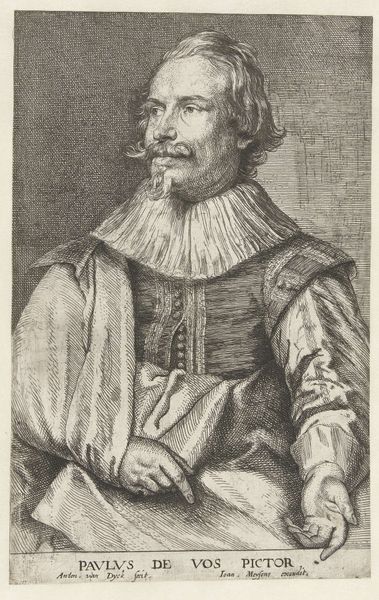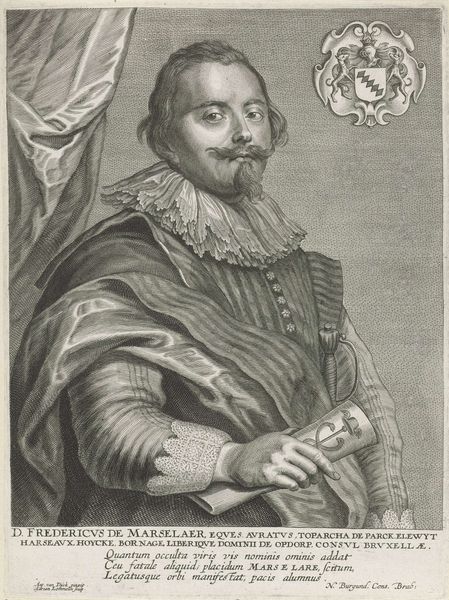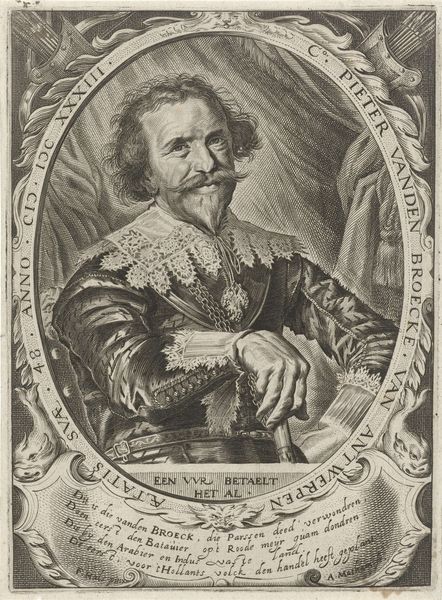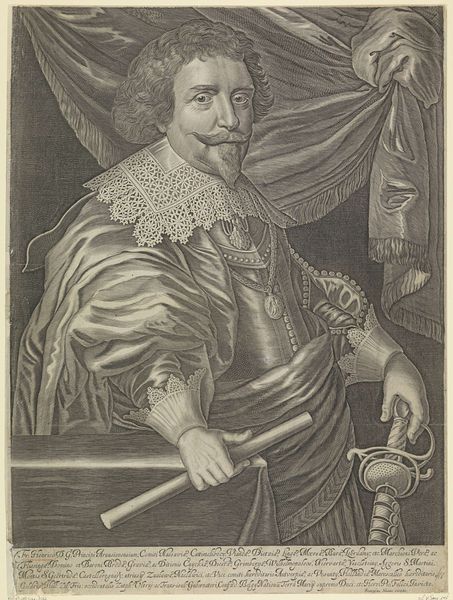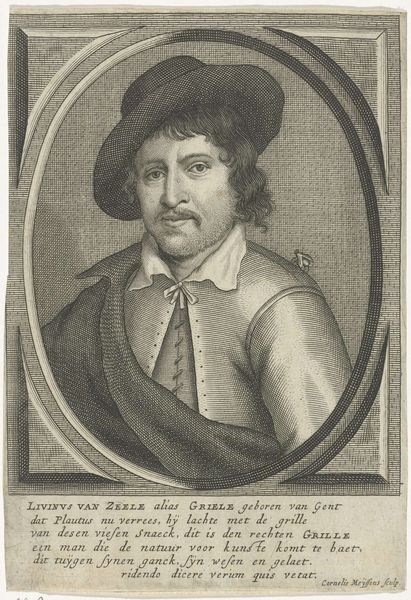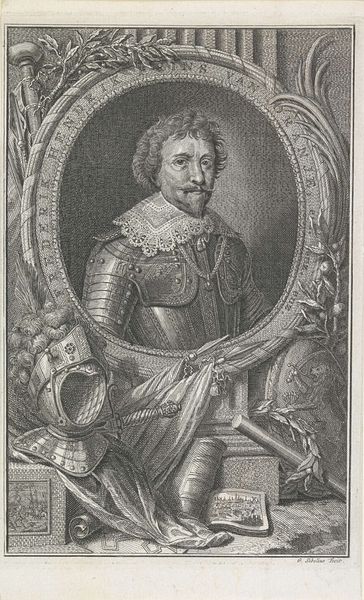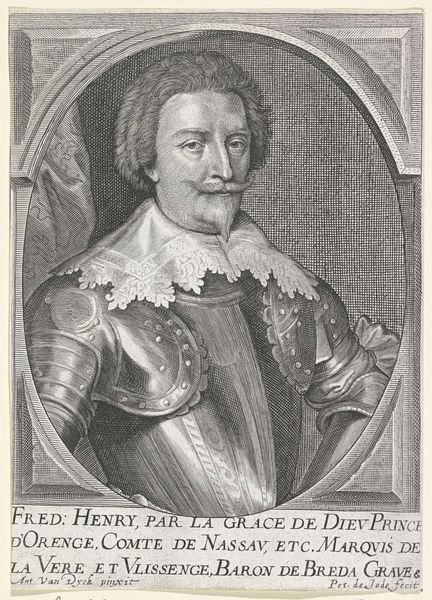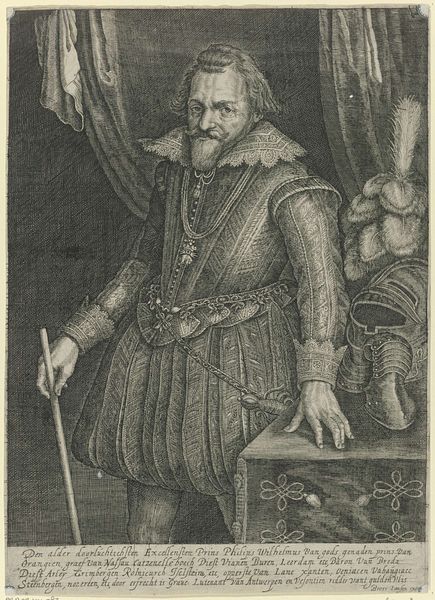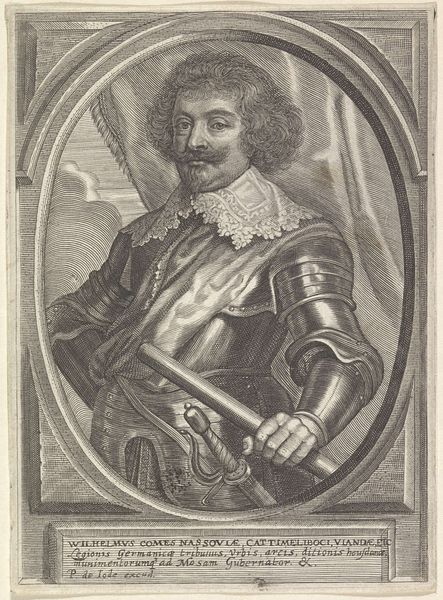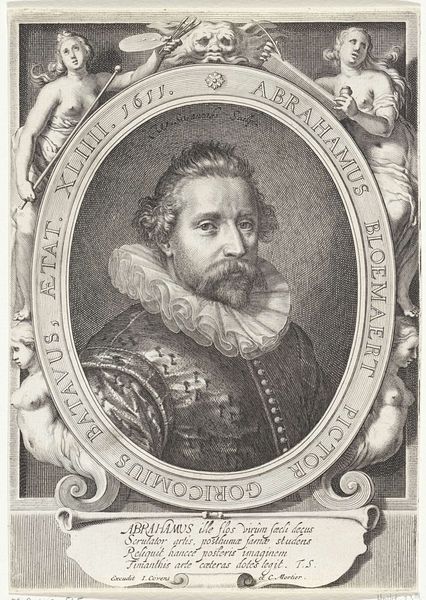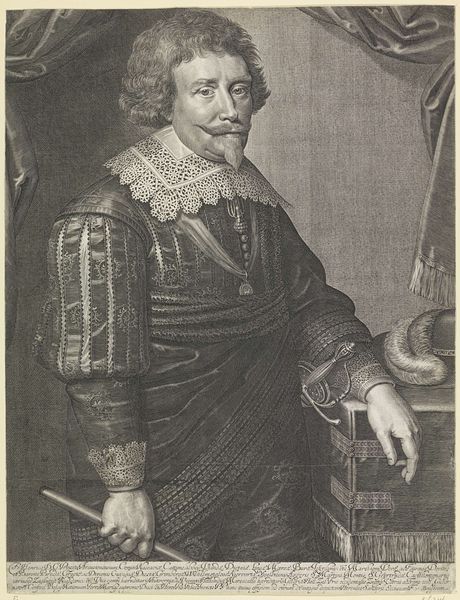
engraving
#
portrait
#
baroque
#
old engraving style
#
caricature
#
figuration
#
line
#
engraving
#
realism
Dimensions: height 285 mm, width 182 mm
Copyright: Rijks Museum: Open Domain
Curator: Today we’re looking at a remarkable engraving, "Portret van Pieter van den Broecke," created sometime between 1702 and 1749 by Isaac Ledeboer. Editor: The first thing that strikes me is the detail; the artist captured so much about this individual, both in his presentation and perhaps even his demeanor. There's a certain reserved intelligence. Curator: Indeed. Ledeboer masterfully utilizes the engraving technique to create a compelling portrait. Observe the meticulous line work, the contrasts in texture achieved solely through variations in hatching and cross-hatching, truly emphasizing his material control. Editor: But let's think about the 'why' here, not just the 'how'. Van den Broecke, director in Persia and Arabia; what did it mean to have your portrait struck like this back then? To what end, in the history of colonial authority? Curator: From a purely visual perspective, the formal arrangement is noteworthy. The subject’s pose, his hand resting on what appears to be a baton of sorts, suggests authority. His gaze is direct, commanding, and the lace collar speaks to status and wealth, which further enhances that authoritative visual reading. The realism throughout is so finely rendered it recalls Baroque tendencies toward precise mimetic representation, Editor: Yet this realism also works to solidify power. This isn’t just a portrait; it's a projection of authority that helped justify exploitative actions of the East India Company, right? He becomes a symbol through careful visual construction of Dutch global influence, particularly toward Persia and the Arab nations, as clearly described underneath his image. Curator: It’s also interesting to note the balance of light and shadow across Van den Broecke’s face, contributing to a compelling illusion of three-dimensionality, so remarkable given it is achieved using just line. Look too at the folds of the draped curtain behind him! Ledeboer’s skillful handling brings texture and weight, acting as both background and subtle status marker, underscoring mastery over form and the very materiality of printmaking. Editor: And we can see now how carefully this visual rhetoric functions, right? The composition, texture, the way light renders him capable - all elements acting to affirm his position, overlooking those who are subjugated. Curator: Considering Ledeboer’s technical abilities, from a purely formal perspective the balance of visual elements demonstrates that while it reflects period sensibilities it achieves an art historical and lasting statement. Editor: Ultimately, thinking of "Portret van Pieter van den Broecke" critically helps us dissect how visual representation functions politically, especially within narratives of dominance.
Comments
No comments
Be the first to comment and join the conversation on the ultimate creative platform.
